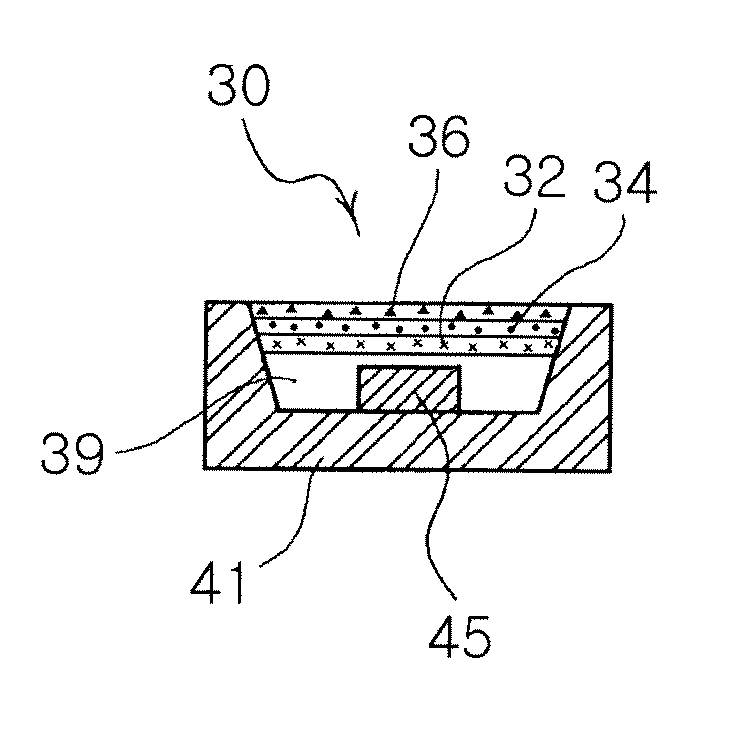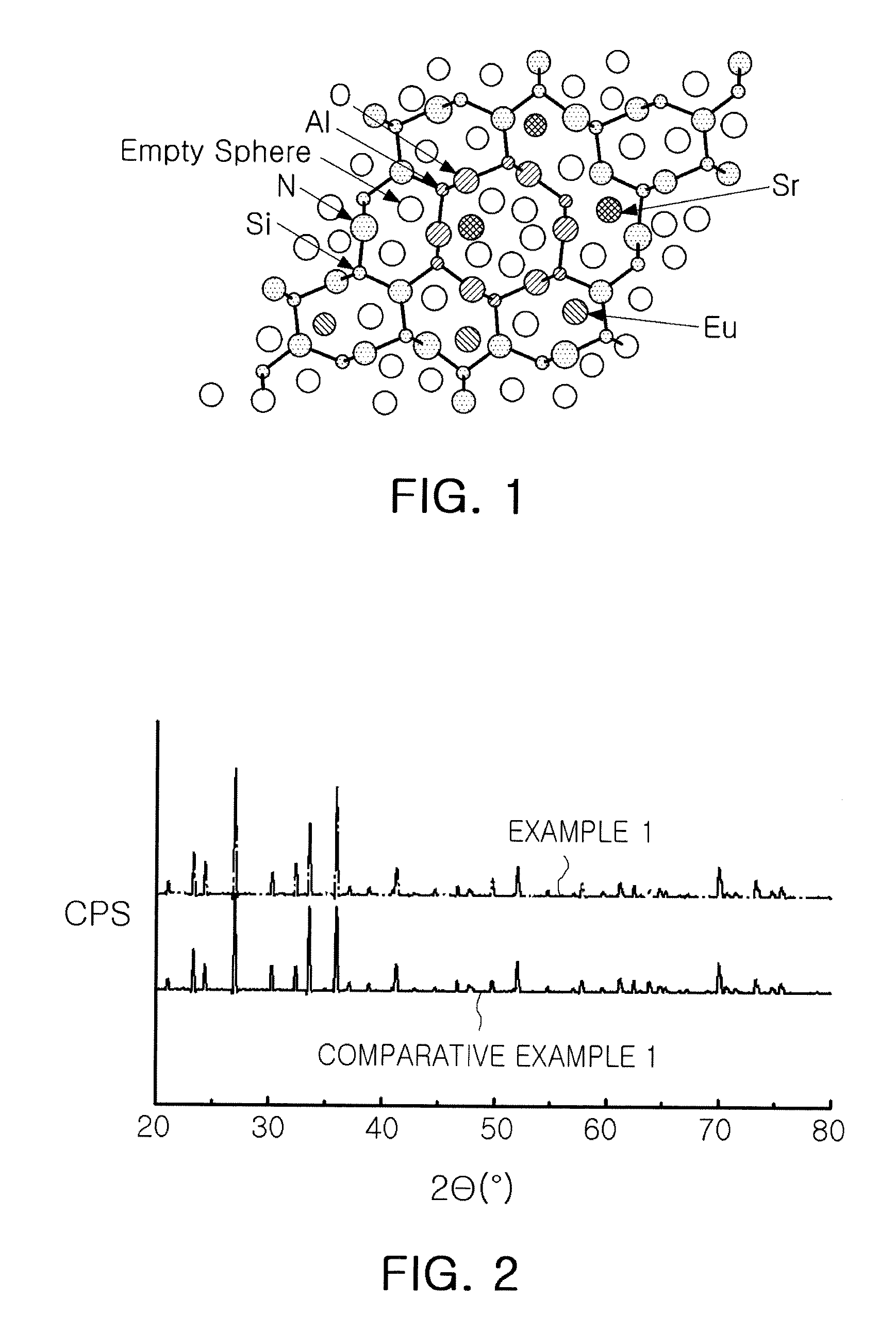Fluorescent substance, light emitting device, surface light source device, display device and illuminating device
- Summary
- Abstract
- Description
- Claims
- Application Information
AI Technical Summary
Benefits of technology
Problems solved by technology
Method used
Image
Examples
example 1
[0104]Raw materials of Si3N4, AlN, Al2O3, Eu2O3, and SrCO3 were weighed according to a stoichiometry rate satisfying a composition rate of the following Table 1 to prepare a raw materials group according to Example 1. A remainder of the raw materials, except SrCO3, from the raw material group, was mixed with an ethanol solvent by using a ball mill.
[0105]The ethanol solvent in the raw mixture was volatilized by using a dryer, the dried primary raw mixture was inserted into the boron nitride (BN) crucible, and the boron nitride (BN) crucible filled with the primary raw mixture was inserted into a heating furnace and primarily fired at 2050° C. for 10 hours in a gaseous state under an N2 atmosphere.
[0106]The primarily fired mixture was crushed and the crushed mixture was secondarily mixed by inserting a weighed SrCO3 thereinto by using the miller. Subsequently, the secondary mixture was again fired at 1750° C., thus manufacturing a phosphor based on the composition rate according to th...
examples 2 to 5
[0114]Examples 2 to 5 were performed under equivalent conditions to Example 1, but so as to satisfy the composition rate of the above Table 1, a β-sialon phosphor to which each of Sr of 1.5 mol %, 2 mol %, 3 mol % and 4 mol % were added was manufactured.
[0115]For the β-sialon phosphors according to Examples 1 to 5 and the β-sialon phosphors according to Comparative example 1, a luminance level was measured together with a light emitting spectrum as a peak wavelength and a full width of a half maximum (FWHM) from an excitation light source of 460 nm and a color coordinate.
TABLE 2PeakFull widthWave-of a halfColor CoordinatelengthmaximumLuminanceClassificationxy(nm)(FWHM)(%)Comparative0.33850.6352540.651.0100Example 1Example 10.33440.6372540.052.5121.6Example 20.33240.6398539.552.0123.5Example 30.32730.6398539.052.2119.6
[0116]On the basis of comparative example 1 (luminance of 100%) to which Sr was not added, the luminance measurement results were represented as luminance according to ...
example 6
[0126]In the case of the present Example 6, with the exception of using BaCO3 as a Ba-containing compound in addition to SrCO3, a β-sialon phosphor containing Sr and Ba of 0.5 mol % respectively was manufactured under the same conditions and processes as Example 1 such that a composition rate according to Comparative Example 6 in the above Table 3 was satisfied.
PUM
| Property | Measurement | Unit |
|---|---|---|
| Grain size | aaaaa | aaaaa |
| Temperature | aaaaa | aaaaa |
| Temperature | aaaaa | aaaaa |
Abstract
Description
Claims
Application Information
 Login to View More
Login to View More - R&D
- Intellectual Property
- Life Sciences
- Materials
- Tech Scout
- Unparalleled Data Quality
- Higher Quality Content
- 60% Fewer Hallucinations
Browse by: Latest US Patents, China's latest patents, Technical Efficacy Thesaurus, Application Domain, Technology Topic, Popular Technical Reports.
© 2025 PatSnap. All rights reserved.Legal|Privacy policy|Modern Slavery Act Transparency Statement|Sitemap|About US| Contact US: help@patsnap.com



